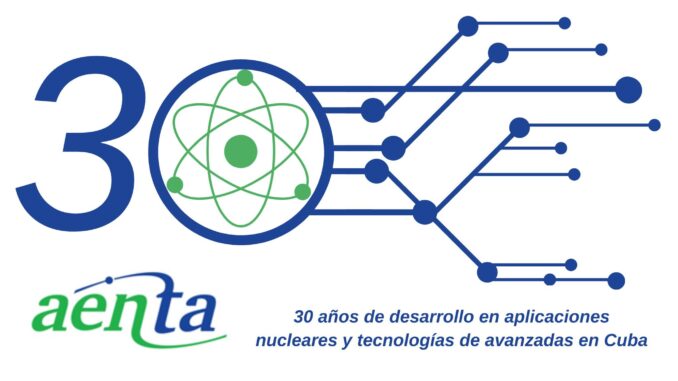
With significant results for the health of any Cuban, the Agency of Nuclear Energy and Advanced Technologies (Aenta by its Spanish acronym) accumulates this April 21 30 years of services of its peaceful use in medicine, production of radiopharmaceuticals for the treatment of cancer and other diseases among the leading causes of death in Cuba.
Under the praising encouragement of Commander-in-Chief Fidel Castro, as early as 1960, the National Commission of the Cuban Academy of Sciences promoted the creation of the National Institute of Oncology and Radiobiology, the Institute of Animal Science and the National Center for Scientific Research (CNIC by its Spanish acronym).
All three achieved the merit of being the first to use ionizing radiation in Biomedicine and other applied techniques, according to Anales de la Academia de Ciencias de Cuba (ACC), a multidisciplinary scientific publication, peer-reviewed and open access.
However, the opening by Fidel and Raul of the Institute of Nuclear Physics (IFN), on January 8, 1969, was the most outstanding expression of what would be the national commitment to the creation and development of the Cuban Nuclear Program, recalled the publication in its reviews on the form of energy that is released from the nucleus or central part of atoms, which consists of protons and neutrons.
In the 1970s, the IFN later became the Institute for Nuclear Research (Inin by its Spanish acronym) and completed, with the collaboration of the International Atomic Energy Agency (IAEA) and the United Nations Development Program (UNDP), much of the basic equipment that had been supplied by the Union of Soviet Socialist Republics (USSR).
Its contribution included radiochemical facilities, gamma radiation sources and neutron and other spectrometry analyzers, which led to the analysis of minerals, applications in agriculture, the use of Rudolf Mossbauer spectroscopy, a phenomenon discovered in 1957 by this German physicist (1929-2011), nuclear electronics and dosimetry.
Essential facilities and human capital
At the same time, the CNIC, head of a considerable number of specialized groups, used nuclear techniques and basic instrumentation for oil prospecting and the characterization of the properties of ionizing radiation.
At that time, the National Commission for the Peaceful Use of Atomic Energy (CNUPEA), departments of specialties at the University of Havana, the Higher Polytechnic Institute Jose Antonio Echeverria and the Physics School of the University of Oriente were also created, and the implementation of a project of the United Nations Development Program (UNDP) began.
In parallel, there was a stimulus to the training of professionals and the obtaining of master's degrees in nuclear specialties and contributed to the initial conception of a future development in this field. Already in 2015 they constituted the Cuban Atomic Energy Commission and the Executive Secretariat for Nuclear Affairs.
Then, the Centers for Radiation Protection and Hygiene (CPHR by its Spanish acronym), Nuclear Safety (CSN by its Spanish acronym) and Studies Applied to the Development of Nuclear Energy (Ceaden by its Spanish acronym), Nuclear Energy Information (Cien by its Spanish acronym) and the Higher Institute of Nuclear Sciences and Technologies (ISCTN by its Spanish acronym) appeared on the scene.
The Isotope Center (Centis by its Spanish acronym) was opened in 1995, and in 1983 Cuba was elected member of the Board of Governors of the International Atomic Energy Agency, established in 1957; and a condition it has repeated for years and even its Cuban management in the Nuclear Group of Non-Aligned Countries that presided between 1983 and 1987, when its participation in the United Nations World Conference for the promotion of nuclear energy was recognized.
The Agency for Nuclear Energy and Advanced Technologies reached its 30th anniversary on April 21 with the condition of being a focal point for collaboration with the International Atomic Energy Agency.
It also promotes its actions in the research and application of other advanced technologies such as lasers, and supports from the technological point of view high value-added productions of the Biotechnology and Pharmaceutical Industries Group (Biocubafarma) and other leading institutions in the country.
Sidebar

 Agencia Cubana de Noticias
Líder en información nacional
Agencia Cubana de Noticias
Líder en información nacional








Nos reservamos el derecho de no publicar los comentario que incumplan con las normas de este sitio